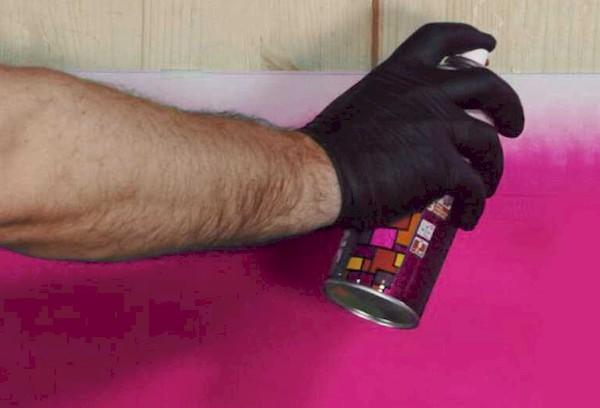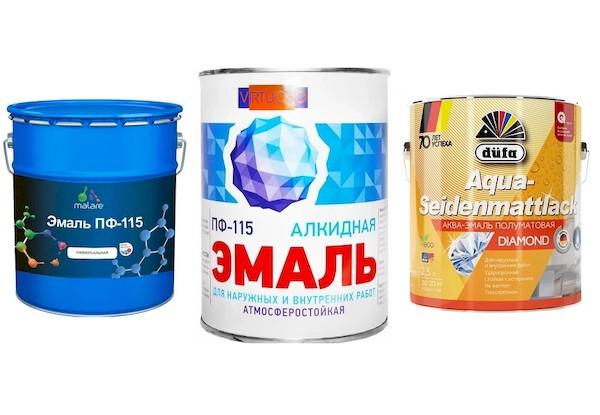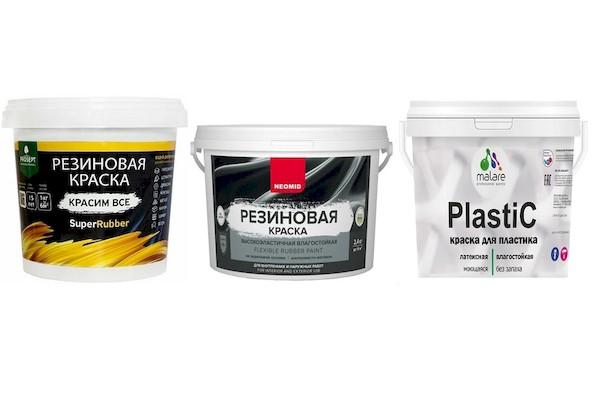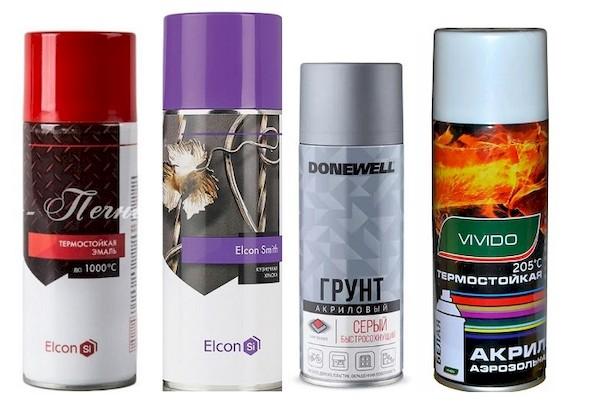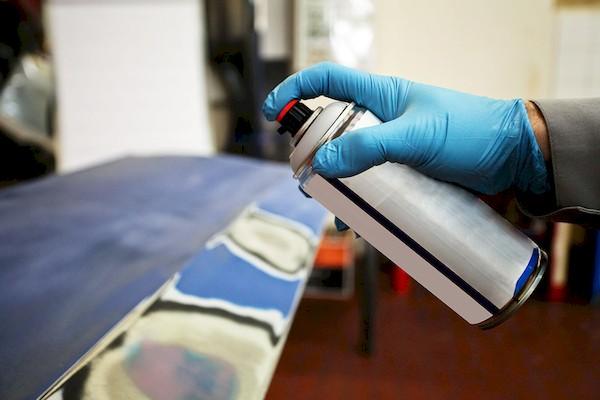How and with what to paint plastic at home?
Content:
You can always just buy special paint for plastic and apply it to the surface with a brush. Fortunately, the choice of modern paints and varnishes is large, many of them are available and can be used at home: waterproof acrylic enamel, universal paints for plastic in cans, etc. But keep in mind that in order for the coating to turn out beautiful and durable, it is necessary to follow the technology. Coloring of plastics is carried out in stages. To allow the dye to adhere, the surface is roughened using sandpaper. Then it is degreased, primed with a special primer, and only then painted.
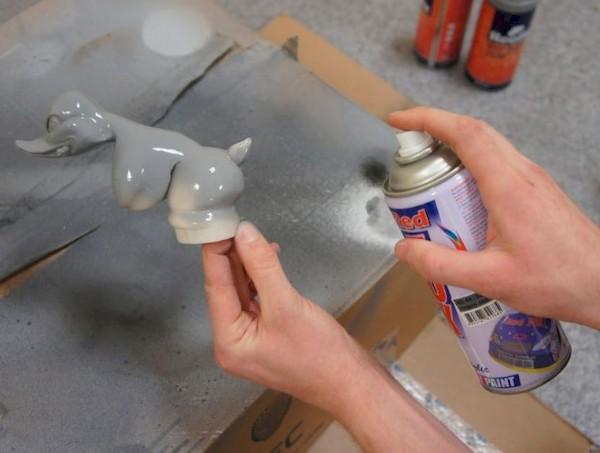
What types of plastic are suitable for painting?
The first step is to find out the type of plastic being painted. The easiest way to do this is by markings on the part. You can study the instructions, information on the manufacturer’s website, or resort to testing: see how a piece of material burns, sinks or floats in water, etc.
Some types of plastic are considered problematic - polyethylene, polyurethane, polystyrene.
This doesn't mean you can't paint them.You should be more careful when choosing paint.
How to choose paint for plastic
When purchasing paint, it is best to first read all the fine print on the packaging. Manufacturers always indicate what materials and types of plastics the product is compatible with.
How to paint plastic so that the paint does not peel off:
- part made of hard primed PVC - alkyd paints;
- hard PVC, plastic - universal acrylic and acrylate paints, as well as silicone (rubber);
- polyethylene - alkyd enamel;
- polyurethane, polystyrene – water-based plastic paints (acrylic, silicone);
- foamed PVC, cable ducts, panels – acrylic-silicone enamel.
It is also necessary to take into account the operating conditions. There are heat-resistant paints and paints that have increased resistance to mechanical stress. Some are suitable for use at home, others are able to withstand aggressive influences (can be used for outdoor work).
When choosing what paint to paint a plastic object, also pay attention to the following parameters:
- temperature conditions and humidity at which the composition should be applied;
- layer drying speed;
- Recommended method of application: on a primer or, optionally, with a spray gun, or with a roller or brush.
Waterproof acrylic enamel
Universal paint. 80% of modern paints and varnishes are made based on acrylic binders. They retain color well, withstanding intense UV radiation, are easy to apply and dry quickly.
Waterproof acrylic enamel has the elasticity necessary for painting plastic and is resistant to wet abrasion and washing.
Representatives of the group: Dulux Easy Update - Windows and doors, Rainbow 180 for plastic, DALI for PVC, Nevel Silver for plastic and glass.
Polyurethane-acrylic paints for PVC
Such paints provide a large layer thickness, are economical, and have all the advantages of acrylic and polyurethane. After drying, the film is highly durable and abrasively resistant, including to chemically active substances and solutions (grease, alcohol, sea water, cosmetics, coffee).
Example of polyurethane-acrylic paints for PVC: Halo polyurethane acrylic enamel for plastic, universal water-dispersed polyurethane-acrylic enamel Landora Lackfarg V halvmatt.
Alkyd paints
Alkyd-based plastic paints are applied exclusively over primer. They usually take longer to dry than acrylics. The advantages are high hiding power and resistance to mechanical stress.
Popular Products:
- Dufa SEIDENMATTLACK;
- VIRTUOSO alkyd weather-resistant enamel;
- MALARE PF-115.
Rubber (silicone)
It has very high elasticity and moisture resistance. Rubber paints are often used for exterior work and roofing. They hide minor defects in the base, prevent cracking, and do not peel off for 10 years or more. Suitable for any plastic except PP, PE and Teflon coatings.
Example of products:
- Neomid rubber paint;
- latex washable MALARE PlastiC;
- rubber PROSEPT SuperRubber;
Aerosol
This category includes all paints that are applied by spraying. For coloring plastic the following can be used:
- Nitroenamel. It is a varnish with pigment. With a thin layer it gives a fairly durable coating. Lay on the plastic evenly if you have experience with use.Beginners do not always manage to apply it without drips and “foam.”
- Base paint (usually acrylic). The aerosol allows you to distribute the composition thinly and evenly. Minus - aerosol base paint is not resistant to mechanical stress. The thin layer is easily scratched. For durability, additional varnish coating is recommended.
Popular representatives of the group: DONEWELL acrylic enamel, Vivido, VIXEN, Elcon for furniture - acrylic (water-dispersed), KUDO quick-drying acrylic (acrylate), nitro MONTANA BLACK.
How to paint plastic
Coloring is carried out in several steps:
- Clean the part to be painted from dirt and wash it.
- Sand it with sandpaper.
- Degrease.
- Cover with primer.
- After the soil has dried, sanding and degreasing must be repeated.
- Apply the first coat of paint and dry.
- Paint the plastic in 2-3 layers.
Important! Do not fill the surface with paint or primer. The layers should be as thin as possible.
Painting can be completed in one day or the work can be divided into two stages - preparation and painting. Modern primers and paints do not require long drying times. One layer dries in 10-15 minutes.
Preparation of plastic
A very important step that should not be skipped. The quality of the preparation of the plastic determines whether a plastic part or plastic object will look like new or not. Preparation includes:
- Sanding the material. Washing the plastic surface is not enough. Often there is indelible dirt and scratches on it. You should go over it with two sandpapers: first with 240 sandpaper, which will remove large defects and make the plastic rough, then with 320 sandpaper, which removes small scratches. It is convenient to use iron brushes in hard-to-reach places.
- Washing the part and adjacent surfaces. After sanding, it is necessary to wash off the resulting dust. It is recommended to clean the workspace as much as possible so that small debris does not fly onto the freshly painted plastic and stick.
- Gluing masking tape. Paint tends to run and splatter. It is necessary to protect the adjacent parts so that they do not get dirty during the process.
- Degreasing. Immediately before applying the composition, the surface is degreased. You can use a special degreaser or take medical alcohol. Saturate a lint-free cloth with the product and wipe the plastic.
- Primer. A primer is applied to the prepared surface, which ensures high quality adhesion of the dye to the plastic, making the surface even and smooth. It is necessary to distribute the soil evenly, wait for it to dry (usually about 15 minutes), and apply the next layer. And repeat this 3-4 times.
- When the primer is completely dry, go over it with 400 sandpaper and remove the dust with a degreaser. After this, you can immediately begin painting.
For reference. The primer is chosen according to the same principle as the paint itself. It must be suitable for the type of plastic being painted, have high adhesion and elasticity. Acrylic primers are mainly used, less often alkyd ones. They are produced in cans, buckets, aerosol cans and in cans that need to be inserted into a spray gun. They are transparent and painted white, gray, black. A colored primer saves paint consumption in cases where the color of the plastic is radically different.
Coloring methods
There are several ways to paint plastic:
- Aerosol. Aerosol application provides the highest quality coverage.However, it is most difficult to do at home. In most cases, you need a compressor, a gun, a respirator, and a good exhaust hood. You need to know and follow safety precautions and cover adjacent surfaces as much as possible. This coloring method is clearly not for beginners.
- With a brush. It is better to take a small flat brush with synthetic bristles. The bristles are elastic and the paint spreads well.
- With a roller. For a smooth coating, use a roller with fine-mesh foam.
At home, it is good to use a brush and roller to paint plastic. The composition is applied with a brush and stretched with a roller. The result is a good, even coating.
Video instructions for painting a plastic window:
Do-it-yourself painting with plastic spray paint on a car:
Question answer
Where are primers and paints for plastic sold?
Special paints for cars can be bought in car paint shops, for plastic furniture, windows, panels - in construction stores, and in the construction chemicals department.
Is it possible to paint without primer?
Depends on the detail. If it is a window frame or a refrigerator or other dense non-load-bearing plastic, you can do without a primer. Flexible parts (bumpers, moldings) should be painted on the ground and nothing else.
Can you dry paint with a hairdryer?
Yes, but only with a household hairdryer. The air flow should be warm or cold, not hot.
With the correct selection and application of paint for plastic, the coating will be strong, durable and attractive. In particular, at home, many people paint plastic windows, doors, window sills, refrigerators, bumpers, thresholds, spoilers, car moldings.You need to choose a paint depending on the type of plastic being painted, learn from the instructions about the intricacies: how to work with this composition, whether a primer is required, how long to dry each layer, etc. In general, the task is not difficult. In most cases, the job can be completed in a couple of hours.
